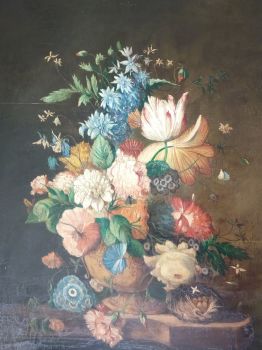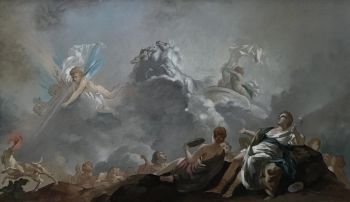Rococo: An Elegant Fusion of Delicacy and Whimsy
Step into a world of delicate charm and whimsical elegance as we explore the enchanting realm of Rococo art. From its playful motifs to its opulent opulence, this artistic movement captivated Europe in the 18th century and continues to inspire today. Discover the ethereal beauty, the intertwining of nature and fantasy, and the enduring legacy of Rococo in our captivating article. Get ready to be transported to a world of grace and refinement, where art and design merge in a delicate dance of whimsy.
Unveiling the Rococo Aesthetic
The Rococo era, which flourished in Europe during the 18th century, was a time of grace, opulence, and refined extravagance. In stark contrast to the grandeur of Baroque, Rococo art embraced a more delicate and whimsical aesthetic. This article delves into the enchanting world of Rococo, exploring its distinctive characteristics, its influence on art and design, and its enduring allure.
Embracing the Playful and Ornamental
Rococo art is characterized by its lightness, elegance, and playful nature. It traded the dramatic intensity of Baroque for a more lighthearted approach, infusing art and design with a sense of joy and frivolity.
Curved lines, asymmetrical compositions, and delicate motifs adorned Rococo works, creating an atmosphere of graceful exuberance. The intricate floral patterns, charming pastel colors, and whimsical themes became hallmarks of the Rococo style.
A World of Aristocratic Opulence
Rococo art found its greatest patronage among the aristocracy and the French court, where it became synonymous with luxury and refinement. Lavish palaces, such as the Palace of Versailles, were transformed into extravagant showcases of Rococo design. Elaborate chandeliers, gilded furniture, and intricate wall paneling adorned these spaces, immersing visitors in a world of unparalleled opulence. The Rococo aesthetic epitomized the indulgent lifestyles of the elite, emphasizing their wealth and sophistication.
Intertwining Nature and Fantasy
One of the distinctive features of Rococo art is its deep connection with nature. Artists drew inspiration from the organic world, incorporating elements such as flowers, shells, and foliage into their works. Nature was often depicted in a dreamlike and idealized manner, blending with elements of fantasy. Mythological figures, cherubs, and ethereal landscapes populated Rococo paintings and sculptures, transporting viewers to a realm where reality and imagination intertwined.
The Rococo Legacy in Design and Fashion
The influence of Rococo extends beyond the realm of art, leaving an indelible mark on design and fashion. The elegant curves and intricate ornamentation of Rococo found their way into furniture, porcelain, and decorative arts. Rococo-inspired interiors became popular, characterized by delicate furniture, pastel colors, and lavish draperies. In the world of fashion, Rococo elements continue to inspire designers, with cascading ruffles, floral patterns, and whimsical embellishments paying homage to the era's delicate aesthetic.
A Timeless Source of Inspiration
Despite its eventual decline in popularity, the Rococo aesthetic continues to captivate and inspire. Its delicate charm and whimsical elegance evoke a sense of romanticism and escapism. Elements of Rococo can be seen in contemporary art and design, as artists reinterpret its essence in a modern context. The delicate balance between refinement and playfulness that defines Rococo continues to enchant audiences, reminding us of the enduring allure of this elegant and distinctive artistic movement.
Conclusion
Rococo art, with its delicate beauty, ornamental grace, and whimsical nature, remains a testament to the splendor of the 18th century. Its influence on art, design, and fashion has transcended time, inspiring artists and captivating audiences for centuries. As we appreciate the intricate details, the soft pastel hues, and the playful compositions, we embrace the enchantment of the Rococo era and recognize its timeless contribution to the world of aesthetics.
Where to buy rococco art?
Here at Gallerease, we only offer high-quality, curated art from the best galleries. Take a look at our platform to discover simple art that suits you!
*François Boucher, “Allegory of Music” 1764.

























